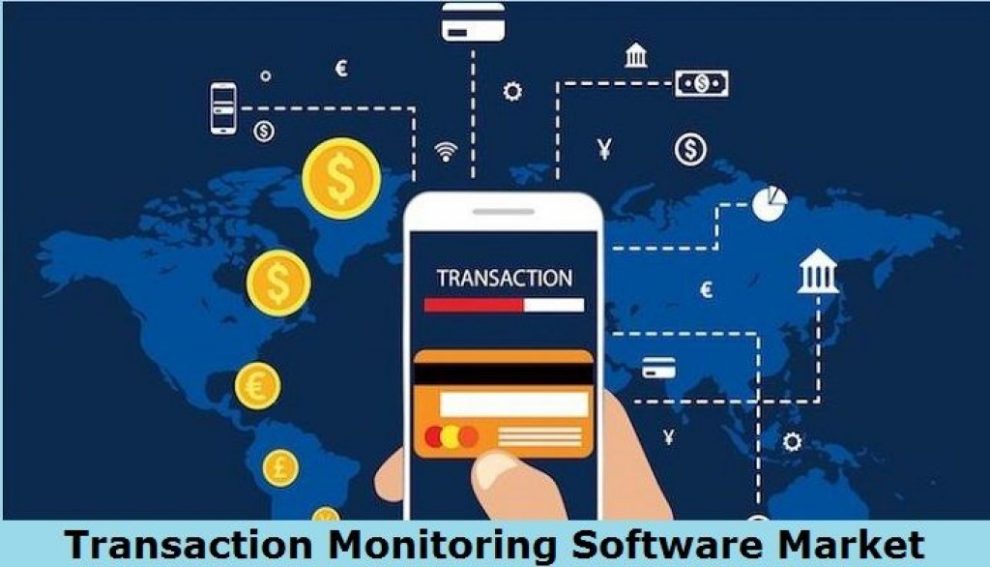In the fast-paced world of finance, staying one step ahead in compliance and risk management isn’t just a goal—it’s a necessity. Transaction monitoring plays a pivotal role in this arena, acting as a powerful tool to detect and prevent fraud, ensure adherence to sanctions, and uphold Anti-Money Laundering (AML) standards. But what makes transaction monitoring so critical, and how can financial institutions ensure they’re doing it effectively?
Transaction monitoring isn’t just about tracking the flow of money; it’s about safeguarding the integrity of financial systems and protecting businesses from potential risks and penalties associated with non-compliance. With the right strategies in place, fintechs and banks can turn transaction monitoring into a robust framework that not only detects irregularities but also enhances overall operational efficiency.
This article delves into the top seven tips for effective transaction monitoring, each designed to enhance AML compliance and risk management efforts. Whether you’re looking to fine-tune your current practices or build a strong foundation in transaction monitoring, these tips will guide you through creating a system that is both efficient and compliant. So, let’s explore how you can boost your transaction monitoring capabilities to meet today’s compliance demands and manage risks more effectively.
Table of Contents
The Significance of Transaction Monitoring
Transaction monitoring is a vital tool for any financial institution, serving multiple roles from fraud prevention to regulatory compliance. It involves scrutinizing customer transactions to detect patterns that may suggest fraudulent activities, money laundering, or violations of sanctions. Here’s why it’s so essential:
- Fraud Prevention: Transaction monitoring acts as an early warning system, identifying suspicious activities that could indicate fraud. This proactive approach not only catches fraudsters but also deters potential criminal actions.
- AML Compliance: To meet Anti-Money Laundering regulations, businesses must monitor transactions thoroughly to ensure they’re not inadvertently facilitating illegal activities. This process is crucial for reporting suspicious activities and maintaining regulatory integrity.
- Sanctions Screening: Integrating sanctions screening ensures businesses do not transact with blocked entities, thus complying with international laws and avoiding potential reputational damage.
- Operational Efficiency: Automating the detection of unusual transactions reduces the workload on human analysts, speeding up customer transactions and enhancing the overall customer experience.
- Building Trust: Effective monitoring reassures customers that their financial transactions are secure, fostering trust and enhancing customer retention.
In essence, transaction monitoring is indispensable not just for compliance but also for ensuring the smooth and secure operation of financial systems in today’s complex regulatory environment.
Tip 1: Leverage Advanced Analytics and Machine Learning
In the digital age, the volume and complexity of financial transactions continue to grow, making traditional monitoring systems often inadequate. Here’s where advanced analytics and machine learning (ML) come into play, enhancing the effectiveness and efficiency of transaction monitoring.
Enhanced Detection Capabilities
Machine learning models can analyze vast amounts of data quickly and with a high degree of accuracy. By learning from historical transaction data, these models can identify patterns and anomalies that human analysts might miss. This capability allows for the detection of sophisticated fraud schemes and unusual transaction patterns that could indicate money laundering or other financial crimes.
Reducing False Positives
One of the biggest challenges in transaction monitoring is managing the rate of false positives — legitimate transactions that are incorrectly flagged as suspicious. This not only wastes resources but can also lead to customer dissatisfaction. Advanced analytics can refine the criteria used to flag transactions, improving accuracy, and significantly reducing false positives. This means compliance teams can focus their efforts on genuine alerts, optimizing their response times and investigative resources.
Dynamic Learning and Adaptation
Machine learning algorithms excel in environments that require constant adaptation. They can continuously learn from new data, which means they can evolve as criminals employ new tactics. This dynamic learning capability ensures that the transaction monitoring system remains effective over time, adapting to new threats and changing patterns without requiring constant manual updates.
Implementation Considerations
To implement advanced analytics and machine learning effectively, businesses should consider the following:
- Data Quality: Ensure that the data fed into ML models is accurate, complete, and timely. Poor data quality can undermine the effectiveness of even the most sophisticated analytics tools.
- Expertise: Employ or train data scientists and analysts who understand both the technology and the specific nuances of AML and fraud prevention.
- Integration: Advanced analytics tools should be seamlessly integrated with existing IT systems to ensure that insights and alerts can be actioned promptly.
By leveraging advanced analytics and machine learning, businesses can significantly enhance the scope and precision of their transaction monitoring systems. This not only bolsters compliance efforts but also provides a strategic advantage in the ongoing battle against financial crime.
Tip 2: Regularly Update Monitoring Rules
Keeping your transaction monitoring system effective over time requires that its rules and parameters stay current with evolving regulatory landscapes and emerging financial crime tactics. Regular updates to monitoring rules are crucial for maintaining compliance and ensuring the system’s effectiveness.
Stay Ahead of Regulatory Changes
Financial regulations are dynamic, often changing to adapt to new financial realities or to close loopholes exploited by criminals. By regularly updating your monitoring rules, you ensure that your system remains compliant with the latest regulatory requirements. This proactive approach can help avoid potential fines and penalties associated with non-compliance.
Adapt to Emerging Threats
Financial criminals continually evolve their methods to bypass detection. Regular updates to your transaction monitoring rules allow you to adjust to new threats as they arise. This includes incorporating new indicators of suspicious behavior identified through industry sharing platforms or from your own detection insights.
Improve Accuracy and Efficiency
Updating rules can also refine the process of detecting suspicious activities, improving the accuracy of alerts. This leads to a reduction in false positives, which can drain resources and lead to customer frustration. Additionally, more accurate rules enhance the efficiency of the compliance team, allowing them to focus on investigating true risks rather than sifting through errors.
Steps for Effective Updates
- Feedback Loop: Establish a feedback mechanism where insights from the compliance team are used to inform rule adjustments. This includes analysis of past alerts and investigation outcomes.
- Regulatory Guidance: Stay informed on guidance from regulatory bodies and adjust monitoring systems accordingly. This may involve attending industry conferences, subscribing to regulatory news updates, and participating in compliance forums.
- Testing and Validation: Before fully implementing new rules, test them to evaluate their impact on alert volumes and accuracy. Use historical data to simulate how new rules would have performed, ensuring they improve system performance without unintended consequences.
Regular updates to monitoring rules are not just about compliance; they are about enhancing the system’s ability to protect your organization effectively. By staying responsive to changes in the regulatory and criminal landscape, your transaction monitoring system will continue to serve as a robust defense against financial crime.
Tip 3: Integrate Sanctions Screening Effectively
Sanctions screening is a critical component of transaction monitoring, ensuring that your business does not engage with individuals, organizations, or countries that pose a potential risk according to global standards. Effective integration of sanctions screening within your transaction monitoring system is essential for compliance and protecting your organization against involvement in illegal activities.
Seamless Integration into Transaction Monitoring
Integrating sanctions screening effectively means embedding it seamlessly into the daily transaction monitoring processes. This integration ensures that every transaction is checked against the latest sanctions lists before processing, helping to prevent any inadvertent breaches of sanctions regulations.
Automate to Enhance Efficiency
Utilizing automated systems for sanctions screening can significantly enhance the efficiency and accuracy of your checks. Automation reduces the burden on human resources by handling large volumes of transactions quickly and consistently, reducing the risk of human error.
Keep Sanctions Lists Updated
Sanctions lists are frequently updated to reflect the changing international political and economic landscape. It’s crucial to ensure that your screening tools are updated in real-time or near real-time to reflect these changes. Failing to do so can result in penalties and damage to your organization’s reputation.
Conduct Regular Audits
Regular audits of your sanctions screening process are essential to ensure it works as intended. Audits can help identify any gaps in the screening process and provide insights into how the system can be improved to handle new types of transactions or changes in the regulatory environment.
Training and Awareness
Training your staff on the importance of sanctions screening and how it fits into the broader context of transaction monitoring and compliance is crucial. Employees should understand the consequences of sanctions violations and be aware of the processes in place to prevent them.
Steps for Effective Sanctions Screening Integration:
- Software Selection: Choose robust sanctions screening software that can integrate seamlessly with your existing transaction monitoring systems.
- Customization and Tuning: Customize the screening parameters to fit the specific risk profile and business nature of your organization.
- Ongoing Review and Optimization: Continuously review the effectiveness of your sanctions screening processes and make adjustments based on changing regulations and emerging threats.
Integrating sanctions screening effectively into your transaction monitoring framework is not just about avoiding fines; it’s about maintaining the integrity of your financial operations and upholding your commitment to global compliance standards. By taking these steps, you ensure that your organization remains vigilant and compliant in a complex regulatory environment.
Tip 4: Enhance Data Quality and Integration
The effectiveness of transaction monitoring systems heavily depends on the quality and integration of the data they use. High-quality, well-integrated data enables more accurate detection of suspicious activities and helps ensure compliance with regulatory requirements.
Prioritize Data Quality
The accuracy, completeness, and timeliness of data are critical for effective transaction monitoring. Poor data quality can lead to false positives or, worse, false negatives where genuine threats go undetected. To enhance data quality:
- Validate and Cleanse Data: Regularly clean your data to remove duplicates and correct errors. This process helps ensure that the data used in monitoring transactions is accurate and reliable.
- Data Enrichment: Supplement internal data with external data sources to get a more comprehensive view of customer activities. This can include data from public records, credit bureaus, and other financial institutions.
Improve Data Integration
Effective transaction monitoring requires data from various sources to be integrated seamlessly. Integrated data provides a unified view of customer activities, making it easier to spot inconsistencies or suspicious patterns.
Establish a centralized data repository where all transaction data is stored. This centralization ensures that data is accessible and can be analyzed consistently across the organization.
Real-time Data Processing
In today’s fast-paced financial environment, the ability to process data in real-time or near-real-time is invaluable.
Use technologies that support real-time data processing and analytics to monitor transactions as they occur. This immediacy allows for quicker detection and response to suspicious activities.
Continuous Improvement of Data Systems
Maintain a routine of continuous assessment and improvement of data systems to adapt to new challenges and changes in the regulatory landscape.
- Regular Audits: Conduct regular audits of your data processes to ensure they meet compliance standards and business needs.
- Feedback Loops: Create feedback loops that allow for the adjustment of data systems based on insights gathered from monitoring outcomes and compliance checks.
Enhancing the quality and integration of data not only supports more effective transaction monitoring but also strengthens the overall compliance framework of your organization. With superior data at your disposal, you can ensure that your monitoring systems are both robust and responsive, ready to meet the challenges of modern financial activities.
Tip 5: Train and Educate Your Team
A well-trained team is crucial for the effective implementation and operation of transaction monitoring systems. Continuous education and training ensure that your staff is up-to-date with the latest compliance regulations, aware of emerging financial threats, and proficient in using your monitoring technology.
Importance of Ongoing Training
Transaction monitoring is a dynamic field, influenced by changes in regulations, advancements in technology, and evolving methods of financial crime. Regular training sessions help keep your team knowledgeable and responsive to these changes.
Customize Training to Team Roles
Different team members may require different levels of understanding and expertise. Customize training programs to suit the specific needs of various roles within your organization, such as:
- Analysts need deep dives into analytical techniques and tools.
- Customer service representatives benefit from knowing the basics of AML policies and how to handle transactions flagged as suspicious.
- IT staff require technical training on the maintenance and enhancement of transaction monitoring systems.
Leverage a Variety of Training Resources
To keep training engaging and effective, use a mix of resources:
- Workshops and Webinars: These can be conducted by external experts or internal leaders to cover specific topics such as new regulations or technological advancements.
- Online Courses: Many platforms offer courses in AML compliance, fraud detection, and data analysis.
- Simulations: Provide hands-on learning experiences where employees can practice responding to simulated alerts.
Tip 6: Conduct Regular Audits and Reviews
Regular audits and reviews are essential to ensure that your transaction monitoring system remains effective, compliant, and aligned with both industry standards and regulatory requirements. These checks help identify any shortcomings or areas for improvement, ensuring that your monitoring efforts are always at their best.
Why Regular Audits Are Crucial
Audits provide an objective assessment of how well your transaction monitoring system is functioning. They help to:
- Ensure Compliance: Verify that your system meets all relevant legal and regulatory standards.
- Identify Gaps: Uncover any weaknesses or gaps in your monitoring process that could lead to compliance risks or security breaches.
- Optimize Performance: Provide insights into the system’s operation, highlighting opportunities for enhancing efficiency and effectiveness.
Reviewing System Performance
Regular reviews of the transaction monitoring system’s performance are crucial for maintaining operational integrity. This involves:
- Analyzing Alert Effectiveness: Evaluate the accuracy of alerts generated by the system to reduce false positives and ensure genuine threats are identified.
- Assessing Technological Adequacy: Ensure that the technology used is up-to-date and capable of handling the volume and complexity of transactions processed.
- Measuring Compliance Adherence: Check that all compliance procedures are being followed and that reporting is done correctly and timely.
Steps for Effective Audits and Reviews
- Schedule Regular Audits: Set a regular schedule for audits, whether monthly, quarterly, or annually, depending on your organization’s needs and regulatory demands.
- Use External Auditors: Consider hiring external experts for unbiased reviews of your compliance and monitoring systems.
- Implement Recommendations: Crucially, act on the findings from audits and reviews. Implementing the recommended changes is vital to improving your system.
Integrating Feedback Mechanisms
Integrate feedback mechanisms to continuously gather insights from users and compliance staff about the system’s functionality and effectiveness. This can include:
- Feedback Forms: After resolving alerts, ask team members to provide feedback on the process.
- Discussion Forums: Hold regular meetings or forums where staff can discuss challenges and propose improvements to the monitoring system.
Documentation and Reporting
Maintain thorough documentation of all audits and reviews, including findings and the steps taken in response. This documentation is essential for:
- Regulatory Reviews: Providing proof of compliance and due diligence during regulatory assessments.
- Internal Record-Keeping: Keeping a historical record of changes and improvements can help guide future decisions.
Regular audits and reviews not only keep your transaction monitoring system compliant and effective but also foster a culture of continuous improvement within your organization. By systematically assessing and refining your monitoring practices, you can ensure that your system remains robust against evolving financial threats and regulatory changes.
Tip 7: Foster a Culture of Compliance
Training should also aim to foster a culture of compliance within the organization:
- Encourage Open Communication: Create an environment where staff feels comfortable discussing potential or observed risks and compliance issues.
- Reward Compliance and Vigilance: Recognize and reward employees who contribute significantly to improving or adhering to compliance processes.
Continual Assessment and Feedback
Implement regular assessments to measure the effectiveness of your training programs. Feedback from these assessments can help refine the training process, ensuring that it remains relevant and impactful.
- Regular Testing: Include tests at the end of training sessions to evaluate knowledge retention and understanding.
- Feedback Surveys: Gather feedback from participants to improve future training sessions.
By investing in the continuous training and education of your team, you enhance their ability to effectively use your transaction monitoring systems and respond adeptly to potential threats. This not only improves your compliance posture but also empowers your employees to contribute proactively to your organization’s overall security strategy.
Conclusion
As we wrap up our exploration of the top tips for effective transaction monitoring, it’s clear that the stakes are high in today’s financial landscape. Implementing a robust transaction monitoring system is not just about complying with regulations—it’s about actively protecting your business from the ever-evolving threats of fraud and financial crime.
The tips we’ve discussed are fundamental for any financial institution aiming to enhance their compliance and risk management practices. From leveraging cutting-edge analytics and ensuring continuous training for your team, to conducting regular audits and keeping your monitoring rules updated, each tip plays a vital role in fortifying your defenses.
We hope that these insights will empower you and your organization to take proactive steps towards strengthening your transaction monitoring capabilities. Remember, effective transaction monitoring is a dynamic process that requires ongoing attention and adaptation. It’s about building a system that not only meets today’s standards but is also prepared for tomorrow’s challenges.
For those looking to delve deeper into transaction monitoring or to enhance their current systems, remember that continuous improvement is key. Stay informed, stay vigilant, and keep evolving your strategies to keep pace with both technological advancements and regulatory changes.
Thank you for taking the time to explore these essential tips with us. We invite you to apply these insights and join us in making the financial environment safer and more transparent for everyone. If you’re interested in more detailed discussions or need further assistance with your transaction monitoring systems, please reach out or follow the link to our full services on our blog.
Together, let’s commit to a future where robust compliance and effective risk management are at the heart of all financial operations.









